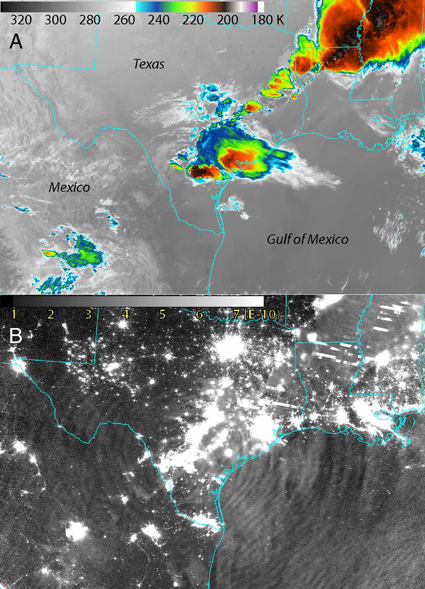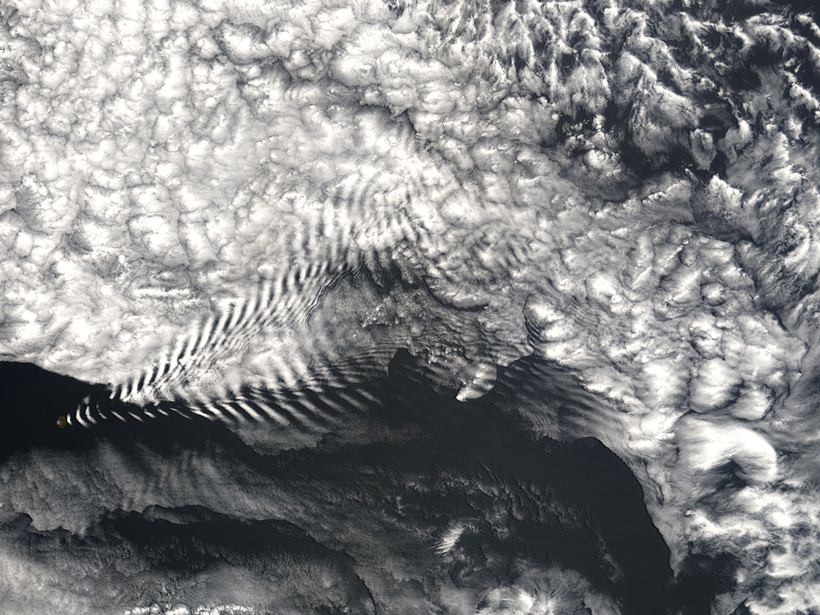Source: Space Weather
Earth’s upper atmosphere is highly variable: It changes over a broad range of physical scales and timescales because of an even broader range of internal phenomena and external forces. Because the upper atmosphere (consisting of the thermosphere and the ionosphere, or the TI) is the part of our atmosphere that most strongly interacts with solar radiation and particles, determines atmospheric drag on incoming space vehicles or debris, and affects radio and GPS signals, it is particularly important in the study of the space environment.
Most of the large events affecting the TI come from the Sun, the solar wind, and Earth’s magnetic field, but even in “quiet time” periods lacking those sources of variability, conditions in the TI continue to fluctuate. These continuing fluctuations point to meteorological forcing caused by processes in the lower atmosphere, which may produce up to 35% of the ionosphere’s variability. The study of this coupling has grown rapidly in recent years, and in a new paper, Liu reviews scientists’ understanding of how various types of waves from the lower atmosphere may cause variations in the upper atmosphere.

Waves in Earth’s atmosphere are generated when the atmosphere is somehow perturbed. For example, solar tides occur when heat from the Sun is unequally distributed across the planet, and many other types of waves are caused by deep convection, the same motion of hot and cool air that results in rain. Most of these wave sources are found in the troposphere, the part of Earth’s atmosphere closest to the ground, but if the wind and temperature are right, they can propagate into the middle and upper atmosphere. Once the waves make it to the upper atmosphere, they can directly effect the temperature of the air, its electrodynamics, and even its molecular composition.
Because meteorological forcing can have such a significant and varied effect on the TI, it is an important factor in models of space weather and the space environment. But such forcings have been difficult to integrate, especially at high spatial resolution.
Gravity waves in particular are not yet well understood. They are caused by disturbances in airflow in the troposphere, such as a cold front or air moving over a mountain. As these disturbances reach thinner air at higher altitudes, they grow in amplitude. Details like how gravity waves interact with other flows in the atmosphere or transfer momentum as they dissipate are difficult to study or simulate because they depend sensitively on winds and temperature and can come in many sizes from many sources.
Between the effects of gravity waves, tides, and other waves, the lower atmosphere is a significant but not yet well understood source of upper atmosphere variability, the author noted. Future studies will need to assimilate observations of both regions in order to understand the whole system. (Space Weather, https://doi.org/10.1002/2016SW001450, 2016)
—Leah Crane, Freelance Writer
Citation:
Crane, L. (2017), When lower-atmosphere waves invade the upper atmosphere, Eos, 98, https://doi.org/10.1029/2017EO068195. Published on 28 February 2017.
Text © 2017. The authors. CC BY-NC-ND 3.0
Except where otherwise noted, images are subject to copyright. Any reuse without express permission from the copyright owner is prohibited.

